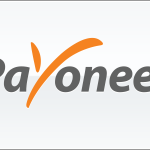When Should You Give Investors Their Money Back?

The economic goal of every business leader is to create value for shareholders; it’s what you are paid to do. If you don’t expect to earn returns that exceed the cost of capital borne by shareholders, you ought to return their money so they can find value elsewhere.
Anyone entrusted with the responsibility of creating shareholder value must know how to calculate the cost of capital — which can also be defined as the return on an investment beyond which such value begins to be created — and apply the concept to decision-making.
The cost of capital is often more specifically referred to as the weighted average cost of capital, or WACC. This reflects the fact that companies typically finance with both debt and equity. It is well known that the cost of debt is less than the cost of equity, because interest is a tax-deductible cost.
Most academics and practitioners concur that the trickiest part of the WACC calculation is figuring the cost of equity capital. There is a variety of models for that. The most widely used in practice is the Capital Asset Pricing Model (CAPM), which postures an expected positive relationship between return and risk.
In the equation, KE is the cost of equity (or shareholders’ minimum required return), RF is what’s commonly referred to as the risk-free rate, RM is the expected return of the stock market as a whole, and β is beta, or the volatility of the company’s stock compared to the market.
In applications of the CAPM, the risk-free rate is typically the interest rate on a government bond. Academics and practitioners debate the appropriate maturity to apply to the bond. We believe that given the long-term nature of most investment decisions (as opposed to annual operations), a maturity of 10 to 15 years is appropriate.
How to calculate the market-risk premium (RM – RF ) is also heavily debated. The debate is around which market index to use as a basis for the calculation, over what time period the index should be tracked, and a variety of statistical issues. We favor what some may consider an old-fashioned route: using the well-known Morningstar Ibbotson capital-markets data — which looks at long-run rates of inflation-adjusted return on stocks, bonds and bills — for the S&P 500 from 1926 to the present. Some would say that only the past few decades are relevant to today, but we believe many past events are likely to recur, so restricting the time period may throw out important data.
Depending on which historical assumptions one makes, the Morningstar Ibbotson data typically indicates a market-risk premium of 5 to 7 percent. We believe that the midpoint of that range, 6 percent, is a fair estimate of the true market-risk premium.
Beta (β), the measure of risk in the CAPM, is the sensitivity of a company’s stock to the movements of a leading market index. Most betas fall in the range 0 < β < 2, with an average of 1 across all stocks in the market. Various statistical tools estimate a company’s beta coefficient. The most common is a regression of the returns on the stock against the returns on a market index such as the S&P 500. But the details of beta calculations are subject to considerable debate, and some authors over the years have declared that “beta is dead.”
Others have argued that too much reliance on the CAPM can strangle innovation, because most products and services that deliver strong value to a company are long-term ones that may not recover their costs of capital in their early years.
In the past few years, many authors have also questioned the theory of market rationality, which is an underlying assumption that’s necessary for the CAPM to be valid. We leave that debate to the pundits. To us, the merit of the model is in its simplicity.
The diagram above suggests what can happen if one ignores the fundamental risk-return relationship. For a company that expects the same return for any project regardless of its risk, represented by the horizontal line paralleling the X axis, projects B and D are acceptable because they plot above the line, while the opposite applies to projects A and C. However, when taking risk into account by applying the CAPM to the allocation decision, project A is acceptable and D is not. The implication is potential misallocation of company resources.
What We Observe
• In today’s world, the range of WACCs typically varies from 8 to 11 percent, depending on the degree of financial leverage. While we see some businesses expressing WACC very precisely to multiple decimal points, we believe that, because numerous assumptions go into the calculations, it’s better to use round numbers.
• We observe buffers being added to avoid an all-too-common trap. Say a company estimates its cost of capital is 12.5 percent and has a project with a 12.7 percent internal rate of return. This appropriation request may therefore look good — but, given that these values are estimates, a company could very easily accept what should be rejected.
• We see market-risk premiums in applications of the CAPM in a range of 3 to 7 percent. We suggest using values at the upper end of this range — the aforementioned 5 to 7 percent. Many do risk adjustments for projects related to emerging markets, different project types and different business units.
• The vast majority of businesses we work with use a form of the CAPM. A few also look at dividend growth models. The two methods could yield widely variable estimates, but the CAPM is likely to be closer to the truth.
The bottom line on the cost of capital? Put simply: estimate what it is using the CAPM, round it up to the next whole number, and ensure that operating returns exceed that. If they don’t, give the investors their money back.
Author: Tom Conine, Ph.D., is president of TRI Corporation, which specializes in corporate education, experiential leadership, and simulation programs to help clients develop leaders, sharpen financial acuity, improve executive business acumen and enhance shareholder value. He is also a professor of finance at Fairfield University in Connecticut.
Source: cfo































